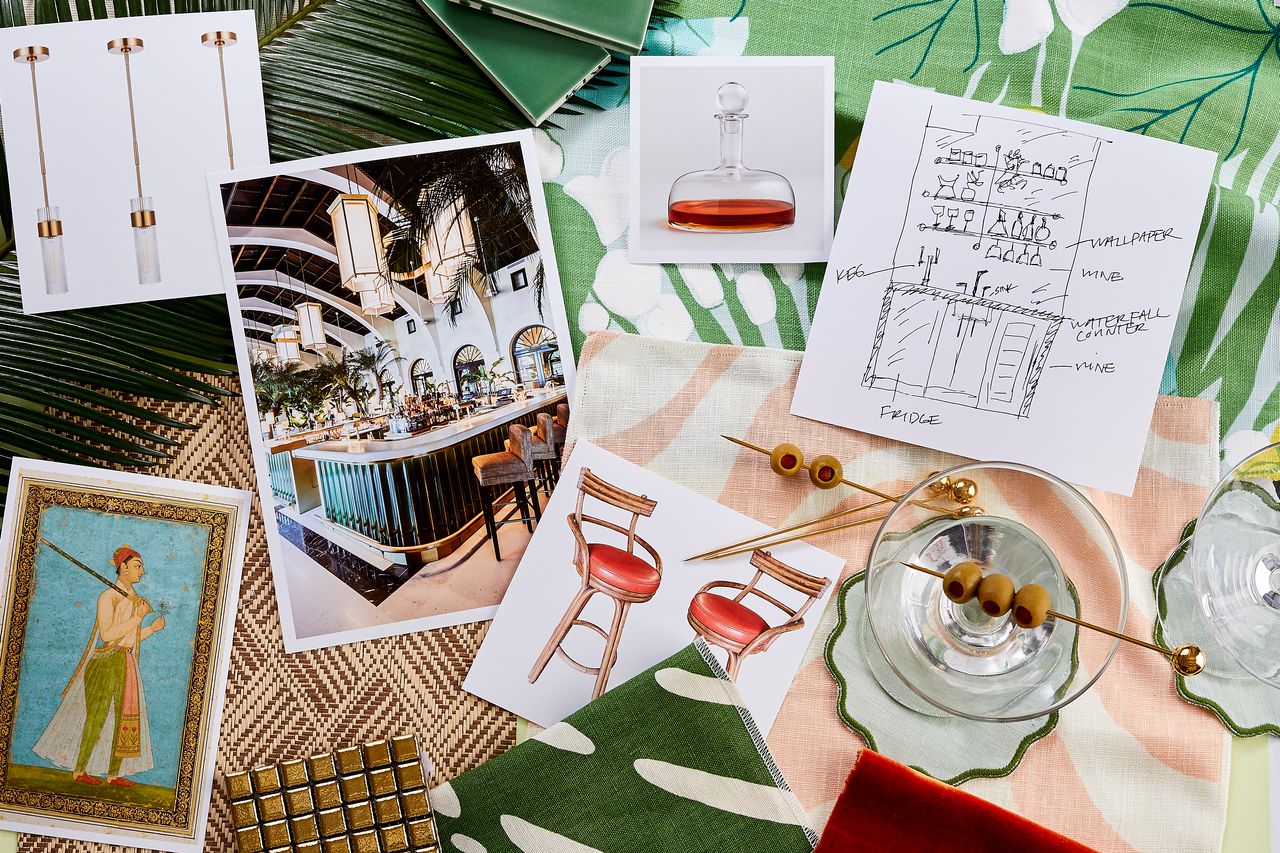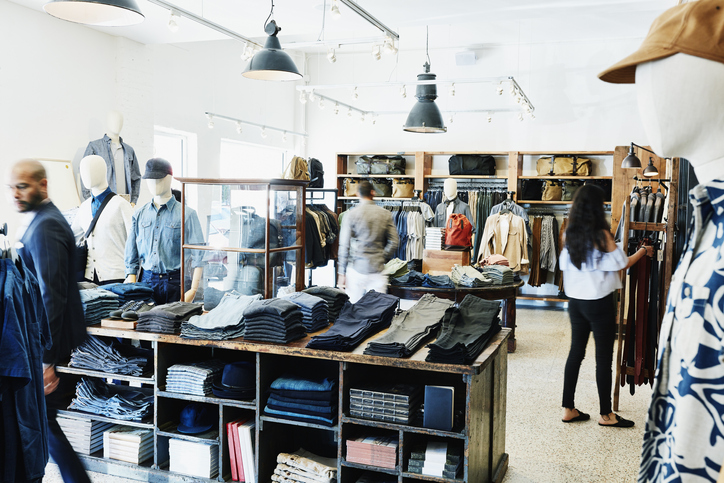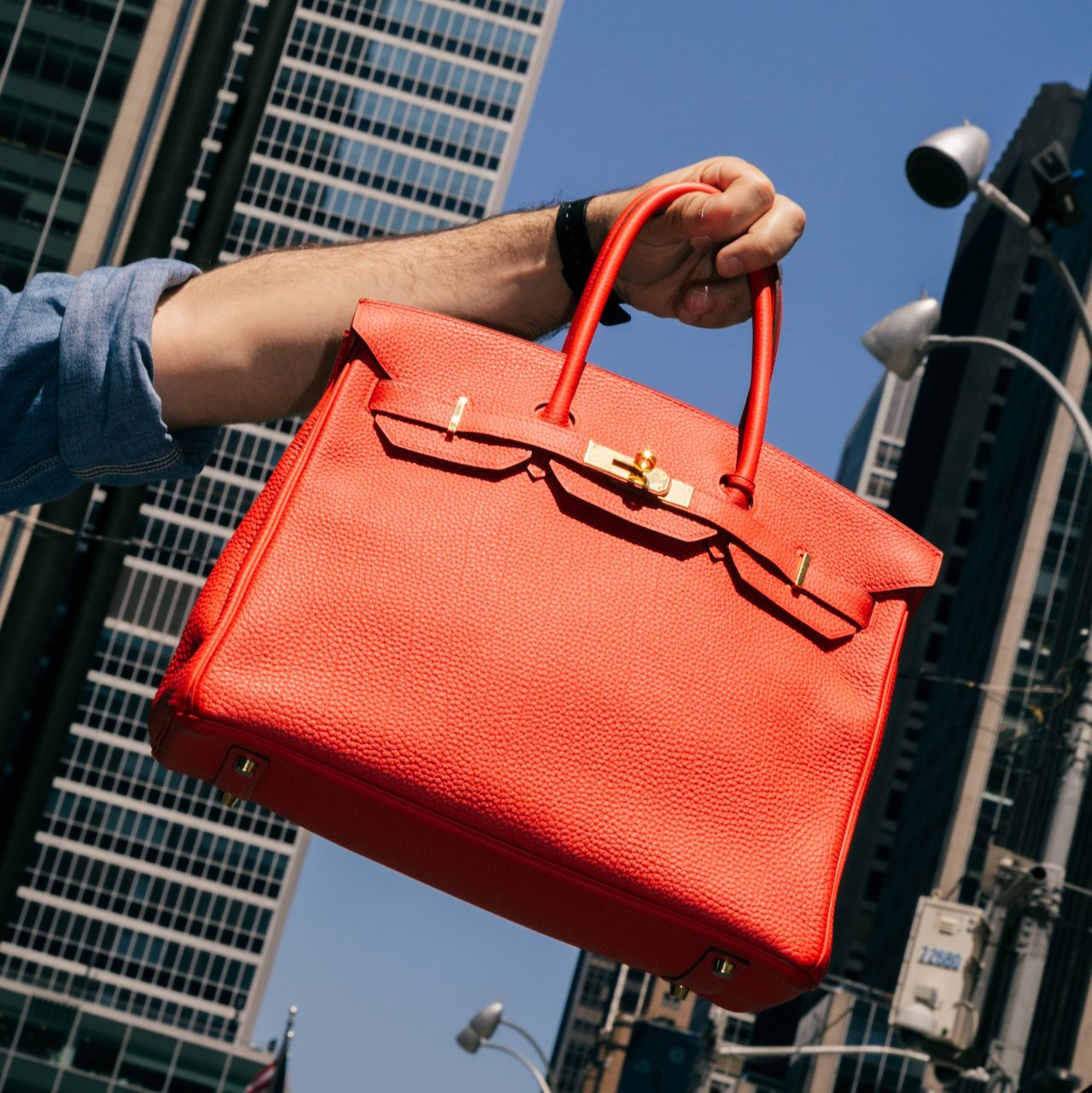POST-COVID INTERIOR TRENDS
After a year of decorating to maximise comfort, homeowners happily spruce up their digs to entertain again.
BOOTY’S IS now, finally, open for business.
The bar is not a commercial establishment, though Kiki Dikmen, a logistics executive, would probably be thrilled to see you. With the help of interior designer Lucinda Loya, he built the bar in his Houston home. It has Mediterranean-blue walls, cloudy mirrors and smoke rings painted on the ceiling. The space was a pandemic labour of love that he recently unveiled to friends and family on his birthday.
“We gave everybody who came a gift—monogrammed masks that said ‘Booty’s’,” said Mr. Dikmen.
Just as the pandemic is winding down for most people in the United States, an end-demic is revving up. Interior designers, furniture showrooms and tableware retailers report that after months of isolation, clients and customers can’t wait to welcome family, friends, colleagues—hell, just about anyone—into their homes. “They feel as though they’ve walked through the fire and survived. They want to reward themselves for the sacrifices and, in many cases, profound losses that they’ve experienced over the last year and a half,” said Palm Beach designer Jim Dove.
With gregarious abandon, homeowners are upgrading décor with a “you only live once” verve that some designers say is unprecedented. Hermès-orange vanities. Gold-striped ceilings.
“Warhol-flowered wallpaper? Yes, please!” said San Francisco designer Katie McCaffrey, who recently clad a powder room with the pop artist’s psychedelic hibiscus.
Sean Anderson, an interior designer in Memphis, Tenn., senses a déjà vu: “I keep hearing people refer to the months and years ahead as the Roaring Twenties, and that is absolutely reflected in some choices that are being made right now.”
The Rug Company has seen a 46% increase in online visits to its “Bright Rug” category, a spokesman said. Among those eye-popping carpets: swirling rainbows and blown-out florals by fashion designers Paul Smith and Mary Katrantzou, respectively. Resource Furniture has seen a noticeable uptick in demand for wall beds that convert home offices into guest rooms. At online furniture seller France & Son, sales of extension dining tables and stacking chairs have increased 40% year over year, said owner Kevin Wu. “We’re getting a lot of calls from people who say they need things delivered in time for a holiday. Memorial Day was just crazy.”
As we say goodbye to social distancing and hello to socializing, folks who had already dolled up their outdoor spaces—because that was the only safe place to get together—are now laying plans to welcome guests into the house. Here’s a room-by-room rundown of the joyful upgrades homeowners have in store for their visitors.
‘Downtown’ Dining Rooms
Chicago firm KBS Interiors is kitting out a dining room for a family that had decamped to the suburbs but who, as vaccinations began rolling out, wanted to make the room “a splashy, lively space to make up for lost time,” said Ana Nardi, co-founder of KBS. Plans include sculptural velvet chairs and a gnarly-chic sideboard made of live-edge wood. “They want their homes to feel more like the hotels and restaurants they missed going to.”
Many suddenly social homeowners want to break bread with as big a crowd as they can shoehorn—stylishly—into their homes. Interior designer Cara Fox in Salt Lake City said clients are requesting extra dining room chairs to accommodate hordes. To seat more guests, Greensboro, N.C., couple David and Rachel Lezcano recently bought a vintage midcentury Heywood-Wakefield dining table that expands—it came with two leaves—to seat up to 10 guests. The Lezcanos, who this week hosted their first dinner party in more than a year, seated six with the use of one leaf. “We’re so excited to have people come into our house again and make it feel alive,” he said.
Nontraditional Tabletop
“We are seeing a huge increase in sales of entertaining and tableware pieces, specifically in very large sets of glasses and plates,” said Noel Fahden, vice president of merchandising at online vintage retail site Chairish. Cocktail napkins are flying off the shelves, as are taper candles, “which is interesting, because typically we would see taper candle sales peak in the fall when there’s less daylight—not around the longest day of the year!” said Ms. Fahden.
And though glassware and candlesticks conjure thoughts of meticulous place settings, Dana Wolter, a designer in Mountain Brook, Ala., sees clients having fun with china patterns and textiles. “It’s formal entertaining but with a more organic and casual flair,” she said.
An earthy bestseller at tableware maker Haand in Burlington, N.C., is the brown Burl collection, which has “flecks of golden colour swirled” into the surface of each porcelain plate, said Haand co-founder Mark Warren. “One of our largest recent orders was 56 pieces, which the customer had mailed to a vacation house,” said Mr. Warren.
That customer happened to be Bob Pittman, creator of MTV Networks and a former chairman of AOL.
Reached by phone, Mr. Pittman described how he was recently overtaken by a strong and unusual desire to elevate his dinnerware. “If you had asked me about my dishes two years ago when I was rushing in and out of the house, I would have said I literally haven’t thought about it in 20 years,” he said. “But during quarantine, I realized I’d let a lot of stuff go to hell and I needed to upgrade. So I bought one piece, and then it became an addiction,” said Mr. Pittman. “Now I’ve got cabinets filled with it.”
Floral arrangements, too, are busting loose. “The formal centrepiece is a thing of the past,” said interior designer Heidi Caillier of Seattle. “Now people are jamming together just-picked wildflowers, poppies and peonies that they grew in their quarantine gardens.”
Dressed-Up Guest Rooms
In anticipation of company post-lockdown, Portland, Maine, resident Candace Karu sold her condo a few months ago and upsized to a 1920s Dutch Colonial that has a spacious spare bedroom. Of course, with travel restrictions then in place, Ms. Karu had no idea when she’d actually be able to have her first sleepover.
“I have far-flung friends and was just hoping they would eventually be able to come and stay,” she said.
In an act of hope, she asked her daughter, interior designer Tyler Karu, to transform the guest bedroom into “the most beautiful room of the house.”
They chose luminous green paint for the walls. “It looks like a colour Vermeer would have used,” Candace Karu said, “and there’s a little corner with a comfy chair, and the bed sits very high so it has a beautiful view of the Portland skyline.” The window shade is a boldly striped fabric by local textiles artist Kels Haley, who created the design in homage to the costumes of 1920s flappers who were “dripping in pearls and wearing elaborate headdresses.”
Operation Houseguest officially got under way after travel restrictions ended in May. “I’ve got a full schedule pencilled in for the rest of the summer,” Ms. Karu said.
Showstopping Kitchens
To create a welcoming atmosphere, clients are looking for “unshackled whimsy” in kitchen décor this year, said New York interior designer Nancy Mayerfield, who has been fielding clients’ requests for coloured appliances. “In recent months, we’ve done blue Lacanche ovens and white Bertazzoni ovens,” said interior designer Keren Richter of White Arrow in New York.
Two homeowners also transformed formerly humble kitchens into spaces fit for company. “We just did a kitchen island that seats eight to 10 people,” said Ms. Nardi of Chicago’s KBS. “We put in a very deep kitchen sink, so guests won’t see the mess.”
In Atlanta, homeowner Jaya Krishnaswami last month upgraded her kitchen with a new pantry with sliding storage shelves and cubbies, designed by California Closets. “We’re having a lot of family coming to visit and I wanted to be organized,” she said. This month Ms. Krishnaswami is hosting 10 relatives who are flying in for a family reunion.
Home Saloons
Not all revellers who desire a domestic watering hole are turning to A-list designers to execute their dreams, à la Mr. Dikmen. Some find accoutrements themselves from sources like 1stDibs, a spokeswoman for whom said the site has seen a noticeable increase in demand for bar carts, dry bars, wine coolers and barware in the last three months.
After moving in May to a new apartment in Ontario, Calif., homewares stylist Miranda Rose Farmer created a serve-your-own bar nook in her dining room. Anchoring the alcove is a console table with three shelves floating above. “The aha moment was when I got a Lazy-susan tray for wine bottles. People can just spin it to whatever bottle they want,” she said. She stocked the nook with pale pink wine glasses, a cut-glass cocktail shaker with a rose-gold metal cap and green shot glasses. “I love the decadence of having people over again and I wouldn’t want to spoil that feeling by serving them drinks in plastic Solo cups.”
Reprinted by permission of The Wall Street Journal, Copyright 2021 Dow Jones & Company. Inc. All Rights Reserved Worldwide. Original date of publication: July 3, 2021
 Copyright 2020, Dow Jones & Company, Inc. All Rights Reserved Worldwide. LEARN MORE
Copyright 2020, Dow Jones & Company, Inc. All Rights Reserved Worldwide. LEARN MORE
This stylish family home combines a classic palette and finishes with a flexible floorplan
Just 55 minutes from Sydney, make this your creative getaway located in the majestic Hawkesbury region.
As Paris makes its final preparations for the Olympic games, its residents are busy with their own—packing their suitcases, confirming their reservations, and getting out of town.
Worried about the hordes of crowds and overall chaos the Olympics could bring, Parisians are fleeing the city in droves and inundating resort cities around the country. Hotels and holiday rentals in some of France’s most popular vacation destinations—from the French Riviera in the south to the beaches of Normandy in the north—say they are expecting massive crowds this year in advance of the Olympics. The games will run from July 26-Aug. 1.
“It’s already a major holiday season for us, and beyond that, we have the Olympics,” says Stéphane Personeni, general manager of the Lily of the Valley hotel in Saint Tropez. “People began booking early this year.”
Personeni’s hotel typically has no issues filling its rooms each summer—by May of each year, the luxury hotel typically finds itself completely booked out for the months of July and August. But this year, the 53-room hotel began filling up for summer reservations in February.
“We told our regular guests that everything—hotels, apartments, villas—are going to be hard to find this summer,” Personeni says. His neighbours around Saint Tropez say they’re similarly booked up.
As of March, the online marketplace Gens de Confiance (“Trusted People”), saw a 50% increase in reservations from Parisians seeking vacation rentals outside the capital during the Olympics.
Already, August is a popular vacation time for the French. With a minimum of five weeks of vacation mandated by law, many decide to take the entire month off, renting out villas in beachside destinations for longer periods.
But beyond the typical August travel, the Olympics are having a real impact, says Bertille Marchal, a spokesperson for Gens de Confiance.
“We’ve seen nearly three times more reservations for the dates of the Olympics than the following two weeks,” Marchal says. “The increase is definitely linked to the Olympic Games.”

Getty Images
According to the site, the most sought-out vacation destinations are Morbihan and Loire-Atlantique, a seaside region in the northwest; le Var, a coastal area within the southeast of France along the Côte d’Azur; and the island of Corsica in the Mediterranean.
Meanwhile, the Olympics haven’t necessarily been a boon to foreign tourism in the country. Many tourists who might have otherwise come to France are avoiding it this year in favour of other European capitals. In Paris, demand for stays at high-end hotels has collapsed, with bookings down 50% in July compared to last year, according to UMIH Prestige, which represents hotels charging at least €800 ($865) a night for rooms.
Earlier this year, high-end restaurants and concierges said the Olympics might even be an opportunity to score a hard-get-seat at the city’s fine dining.
In the Occitanie region in southwest France, the overall number of reservations this summer hasn’t changed much from last year, says Vincent Gare, president of the regional tourism committee there.
“But looking further at the numbers, we do see an increase in the clientele coming from the Paris region,” Gare told Le Figaro, noting that the increase in reservations has fallen directly on the dates of the Olympic games.
Michel Barré, a retiree living in Paris’s Le Marais neighbourhood, is one of those opting for the beach rather than the opening ceremony. In January, he booked a stay in Normandy for two weeks.
“Even though it’s a major European capital, Paris is still a small city—it’s a massive effort to host all of these events,” Barré says. “The Olympics are going to be a mess.”
More than anything, he just wants some calm after an event-filled summer in Paris, which just before the Olympics experienced the drama of a snap election called by Macron.
“It’s been a hectic summer here,” he says.

AFP via Getty Images
Parisians—Barré included—feel that the city, by over-catering to its tourists, is driving out many residents.
Parts of the Seine—usually one of the most popular summertime hangout spots —have been closed off for weeks as the city installs bleachers and Olympics signage. In certain neighbourhoods, residents will need to scan a QR code with police to access their own apartments. And from the Olympics to Sept. 8, Paris is nearly doubling the price of transit tickets from €2.15 to €4 per ride.
The city’s clear willingness to capitalise on its tourists has motivated some residents to do the same. In March, the number of active Airbnb listings in Paris reached an all-time high as hosts rushed to list their apartments. Listings grew 40% from the same time last year, according to the company.
With their regular clients taking off, Parisian restaurants and merchants are complaining that business is down.
“Are there any Parisians left in Paris?” Alaine Fontaine, president of the restaurant industry association, told the radio station Franceinfo on Sunday. “For the last three weeks, there haven’t been any here.”
Still, for all the talk of those leaving, there are plenty who have decided to stick around.
Jay Swanson, an American expat and YouTuber, can’t imagine leaving during the Olympics—he secured his tickets to see ping pong and volleyball last year. He’s also less concerned about the crowds and road closures than others, having just put together a series of videos explaining how to navigate Paris during the games.
“It’s been 100 years since the Games came to Paris; when else will we get a chance to host the world like this?” Swanson says. “So many Parisians are leaving and tourism is down, so not only will it be quiet but the only people left will be here for a party.”
This stylish family home combines a classic palette and finishes with a flexible floorplan
Just 55 minutes from Sydney, make this your creative getaway located in the majestic Hawkesbury region.






















